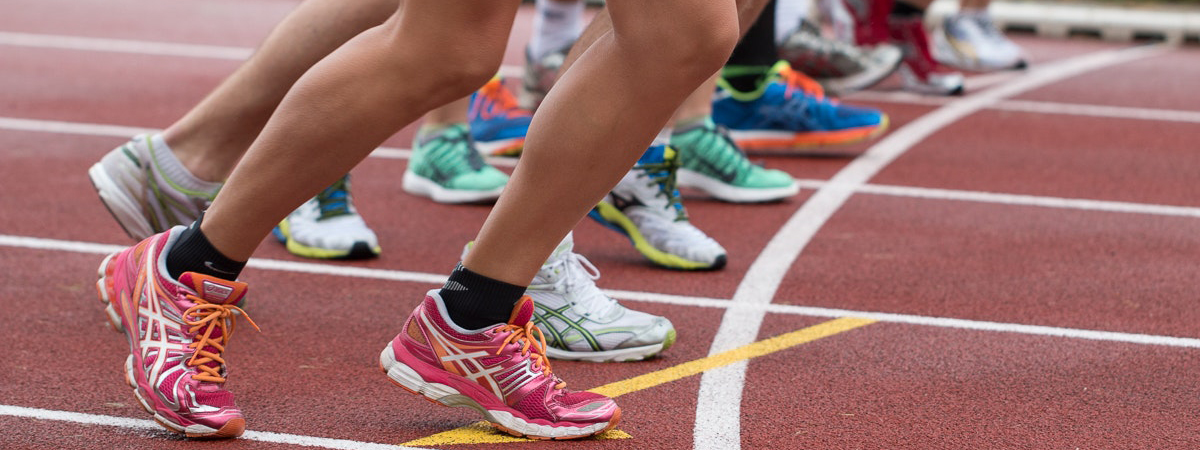The shift to athleisure as people spent more time at home during the pandemic along with the lockdown exercise craze meant sportswear retailers have reaped in the benefits over the last 2 years.
Dressipi data shows there has been a permanent increase of 1-2% of sportswear as a % of total revenue since pre-Covid.
Sweatshirts tripled in volume of sales from 2019 to 2021, from 0.5% of total womenswear spend to 1.5% respectively. They peaked at around 3.6% at the height of lockdown. Tracksuit bottoms held a similar story. They were 4% of overall bottoms spend in 2019 which increased to 12%, after ballooning to a whopping 34% at the height of lockdown. Leggings sales doubled from 4% in 2019 to 8% for the same period in 2021 with a peak of 27%. Cycling shorts also became popular from close to 0% pre-Covid to 11.15% of revenue in sportswear bottoms in Oct 2021 after the trend took off in April 2021.
The global sportswear market was valued at $351m in 2017, and is expected to reach $547m by 2024 (Allied Market Research). If you are part of this then don’t miss out on our top tips to make your brand even more profitable:
Keep Decreasing your Sportswear Return Rates
Sportswear clothes are returned at rates of around 11.3%, much lower than the average clothing return rate of 14.3%.
-
For sportswear, neutral tones including black, gray and brown are returned the least for all sizes, and white was the most frequently returned color for all sizes.
-
Women ordering an XL returned clothing the most frequently, with white items being returned 31.83% of the time compared to L white items 17.03% of the time.

-
Men return much fewer items than women. This is a huge benefit as for all womenswear sales, 2.96% come from sportswear whereas for men this shoots up to 6.70%.
TIP 1 - You need to understand not only which products get returned the most and why but also which attributes are returned the most. This will allow you to recommend the right product to the right customer.
TIP 2 - If returns are high, drill down into the reasons behind the returns. It is often assumed that most returns are driven by sizing issues, however, most of the time, this is not the case.
Athleisure vs Activewear
Athleisure garments such as straight cut tops and hoodies have increased by 21.48% pts and 12.7% pts respectively whereas sportswear garments such as tank tops decreased by 11.48% pts.
TIP 3 - With the rise in athlesiure, you need to understand that there are two types of customers, one’s who buy garments for training or sports and another who buy garments for lifestyle. If the customer is unknown then give the option for both on the PDP.
Found your perfect match?
All sectors consume apparel differently. For example, with kidswear you need to understand that kids grow up very fast so knowing the age of the child is more important than the shape. With men, they are much more consistent when they buy clothes, outfits for them are about discoverability. Sportswear is no different, there are lots of things to take into account.
Customers repurchase the same garment a lot more often in the sportswear space due to trends not differing as much as fashion. Wear and tear is also likely to be much higher. If you find your perfect pair of leggings then why not repurchase the same item?
Total sportswear customers come back and purchase sportswear again every 3.6 months - 20% less than fashion customers who repurchase every 4.32 months.
TIP 4 - If your customers are repurchasing leggings every 3 months, then communicate with them and send the right product in the right time frame.
Categories Purchased Together
Right from the start brands have showcased their product through looks and outfits: from catwalk collections to window displays, shop mannequins to advertising campaigns and on today’s social media platforms. They play a huge part in our everyday life.
Of all sportswear orders that had items from more than one category, the highest % of categories being bought together were 32% sports bottoms and sports tops, showing that creating looks for sportswear is hugely important too. Personalizing looks will deliver an additional 2-3% incremental revenue.
TIP 5 - Remember to not mix seasons or clubs when creating personalized looks for customers.
The sportswear market will continue to grow. Jump ahead with these top tips and get in touch for some more information.
You might also be interested in this article…
The Athleisure Trend is Here to Stay
Discover how people are dressing and expressing themselves post-pandemic with some interesting findings from our analysts.

